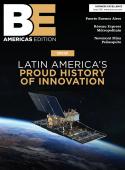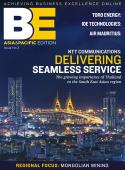Silver buckshotTriMet, the Portland regionÔÇÖs transit district, uses a variety of strategies to keep people moving around the city economically and efficiently, Gary Toushek learns. The early years of public transit in the Portland, Oregon, area were precarious to say the least. About 35 different entitiesÔÇöpublic, private, or combinationsÔÇötried over the course of a century to create a workable transit system, but none was successful. With Rose City Transit facing bankruptcy, the state legislature stepped in and created TriMet in the late 1960s. But transit continued to struggle as the focus remained on highway expansions. In the early 1970s the stateÔÇÖs ÔÇ£Transportation Plan for 1990ÔÇØ recommended 54 major highway projects, yielding to the growing use of the family car. The report predicted that ÔÇ£PortlandÔÇÖs still-declining bus system would remain insignificant as a transportation means except for the rush hour commute downtown,ÔÇØ where traffic jams were common.But residents and political leaders rejected that future, and the concept of light rail was born. They called on the resources of the city of Portland, the state of Oregon and the federal government to contribute funding for the first rail line. More than 22 years later, the system has grown to 44 miles, making the connection from Portland to three suburban cities, as well as the first train-to-plane connection on the West Coast. It has taken a while, but a first-time rider on todayÔÇÖs TriMet system would never suspect the difficulties and anxious efforts that have resulted in the modern, efficient, environmentally friendly transit system that serves the 575 square miles of the Greater Portland area. Two-thirds of it is buses; the other third is light rail (called MAX, for ÔÇ£Metropolitan Area ExpressÔÇØ), plus a service for the elderly and disabled. Fred Hansen, general manager of TriMet, has been working hard for a decade to achieve the next phase of this transit system, and if heÔÇÖs not quite there yet, heÔÇÖs close. HeÔÇÖs certainly qualified. An Oregon native, he has long been an advocate of public transit and uses it himself regularly. Hansen has been OregonÔÇÖs deputy treasurer and directed the Oregon Department of Environmental Quality for more than 10 years before becoming deputy administrator for the US Environmental Protection Agency in Washington, DC. In his current position he has overseen the development and construction of several projects, such as TriMetÔÇÖs Westside Express Service, the first commuter rail line in Oregon, scheduled to open this fall, serving four suburban cities and connecting riders to the rest of the transit system quietly and comfortably in record time. The I-205/Portland Mall Light Rail Project, now under construction, an expansion of the existing light rail system, is a $576 million partnership between TriMet and the local, state and federal governments.And the planning continues. TriMetÔÇÖs sixth light rail line is in the early design phase, extending from downtown Portland to Clackamas County, and another line is planned to extend across the Columbia River into Washington State. Knowing the lay of the land and the various funding sources available through government agencies is certainly valuable when advancing the planning of a regional transit system.ÔÇ£The challenges are fun,ÔÇØ says Hansen, ÔÇ£being able to keep a large organization focused and motivated, always visualizing the goal we want to achieve, and working our way toward thatÔÇöeverything from superb customer service to the planning of the next light rail alignment. ItÔÇÖs not just the ability to transport people from Point A to Point B; itÔÇÖs also about how this community develops and grows relative to transit, how it preserves its sense of neighborhoods or creates new ones, being able to make public transit part of the development equation, to create a framework in which the investment in transformational infrastructure really helps make communities better.ÔÇØTriMet is considered one of the nationÔÇÖs leaders in designing and building light rail systems. ItÔÇÖs a combination of matching the communityÔÇÖs land use goals with transportation that creates and strengthens the neighborhoods it serves. More than $6 billion in development has occurred within walking distance of the MAX stations since the decision to build in 1980.The front-line ambassadors of the system, as Hansen puts it, are the operators of the transit vehicles, chosen for their personality and ability to relate to other people. ÔÇ£Transit systems have typically looked for somebody with driving skills, then taught them customer service skills,ÔÇØ he says. ÔÇ£But weÔÇÖve concluded that customer service skills are kind of hard-wired into certain individuals, so weÔÇÖre better off finding people with those social skills, who come from a good work experience. WeÔÇÖll teach them driving skills if necessary, which is a significant shift from the way most transit systems, including this one, operated a few decades ago. We now attract people who could probably work at a lot of other places, but because of our policies, our land use transportation connection, and because weÔÇÖre leading the way on other aspects, they want to be part of us.ÔÇØOngoing increases in fuel prices add an extra $13 million burden to this yearÔÇÖs budget, which means cuts in other areas, and a fare increaseÔÇöalthough riders, as in the rest of America, are now realizing that leaving the car at home and taking public transit is a better idea economically and environmentally. ÔÇ£WeÔÇÖve had several programs under way to reduce TriMetÔÇÖs environmental footprint, focusing on making ourselves as fuel-efficient as possible,ÔÇØ says Hansen. ÔÇ£WeÔÇÖve made some changes to buses. For example, weÔÇÖve electrified a number of parts of the power system that had been previously drawing horsepower from the engine, since they were mechanically supported, and now those sub-systems make less demand on the engine. We use nitrogen gas rather than air in bus tires because itÔÇÖs heavier and less likely to leak; therefore, weÔÇÖre able to keep tire pressure more consistent. And weÔÇÖve tightened the alignment of front tires so we donÔÇÖt experience tire drag pulling in and out of bus stops. WeÔÇÖre doing a whole series of things that are helping us become, if not the most fuel-efficient transit agency in America at the moment, at least pretty high up there.ÔÇØ HansenÔÇÖs been talking to major downtown employers, asking them to consider staggering shift times for employees by at least 15 minutes, or ideally by 30 to 45 minutes, which spreads out peak loads, enabling TriMet to easily accommodate more riders. ÔÇ£WeÔÇÖre doing a lot of exciting things,ÔÇØ he says. ÔÇ£You always have to improve, change and adapt to different conditions, and we think weÔÇÖre agile that way. ItÔÇÖs not a specific formula. ThereÔÇÖs no silver bullet in this world, as I like to say; itÔÇÖs more like silver buckshot. You have to find a series of different strategies and make them work for you.ÔÇØ┬á









